Report from the T&L Leader Innovation Summit
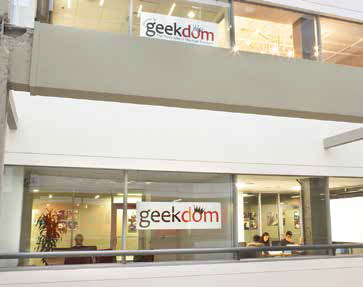
OFF-SITE VISIT TO GEEKDOM, SAN ANTONIO, TX
The pre-ISTE Tech & Learning Innovation Summit began with a tour of a unique co-working space in downtown San Antonio that demonstrates some of the key ingredients for innovation: collaboration, “making,” and problem solving. Summit attendees were welcomed by Geekdom CEO David Garcia, who gave an overview of the work that Geekdom facilitates. In addition to being a membership-based co-working space, Garcia said, the organization also hosts accelerator groups. “Geekdom is like the YMCA for geeks,” Garcia explained. “We’re building an ecosystem in San Antonio that will be the source of the next 10,000 technology jobs here.”
Geekdom has just entered its first school partnership with CAST high school. The school will work with industry partners, including Geekdom, to prepare students for careers in technology and business. They use computer-based learning to allow students to progress quickly in their areas of interest and college coursework, and students will graduate with a high-school diploma as well as an associate’s degree, industry certifications, and portfolios that feature examples of their work. Many of these students will be ready for good tech jobs when they graduate. Garcia spoke to T&L leaders about how Geekdom can be a model for K–12 schools that want to better prepare their students for a collaborative, project-based learning environment.
OPENING PANEL PRESENTATION: INNOVATION SUMMIT
A panel of experienced district leaders opened the Summit with a series of mini-keynotes, sharing their thoughts around innovation in K–12 schools.
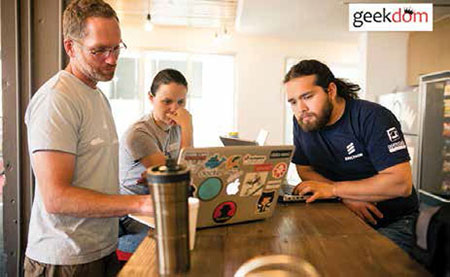
DONNA WILLIAMSON, TECH DIRECTOR AT MOUNTAIN BROOK (AL) SCHOOLS
When starting to innovate, you have to overcome your fear and go big. In 2014, we went to our corporate and community partners to help fund some innovative ideas. The district would support the ideas with human capital. What we did was innovative three years ago, not necessarily today: we implemented immersive virtual worlds, makerspaces, and the STEAM model in curriculum. How do you know if it’s innovation or renovation? Defining that is the hard part. Renovation is more frequent than innovation, but we’re learning how to develop and support an innovative culture.
VINCENT SCHEIVERT, CIO AT ALBEMARLE (VA) COUNTY PUBLIC SCHOOLS
Innovative spaces change pedagogy. We built a new middle-school fitness center with a ten-foot video wall with biometrics and a sound system. Technology is changing how kids interact with themselves. We also designed our 1:1 with a space where kids can move within the walls to collaborate and communicate—moving in and out of spaces with their laptops. We built flexible spaces. We have no lockers in our new high schools. We replaced them with charging stations and benches. We’ve blown out the walls of traditional spaces and let kids define the learning spaces for themselves. We’ve also seen a big gain in teacher performance because teachers and students feel comfortable in the spaces.
DIANE DOERSCH, CHIEF TECHNOLOGY & INFORMATION OFFICER AT GREEN BAY (WI) PUBLIC SCHOOLS
Connecting the dots is innovation. How do you systematize for innovation? To deal with poverty issues, we chose Kajeet hot spots so that students can check out laptops and take them home. Data limitations were not a problem because of our filters. When we started in 2013 with 4G, I brought Sprint and Kajeet to the district table to make sure it worked before we introduced it to kids and families. We also did massive training, sending out tech integrators and media specialists to open houses to speak to families. We made sure that families had all the information to make this work. We were recognized by the state legislature because of our innovative approach. Now that we’ve built a strategic structure, when we have innovative ideas, we’ve got a framework to make them happen.
MIKE LUBELFELD, SUPERINTENDENT OF DEERFIELD (IL) PUBLIC SCHOOL DISTRICT 109
Engage. Inspire. Empower. In order for us to innovate, we have to reset and respect the past. What was great about the past? The relationships teachers had with students. We want to celebrate the best of that, but our learning environments have to change for innovation to take place. Nothing is more important than relationships, and technology can humanize relationships. Communication is a leader’s best friend. There are other places we can look to for inspiration. Look at garbage trucks; they provide an innovation model to help us to understand how to transform what we’re doing. The world is now at our fingertips.
DATA PRIVACY, SECURITY, AND IDENTITY MANAGEMENT
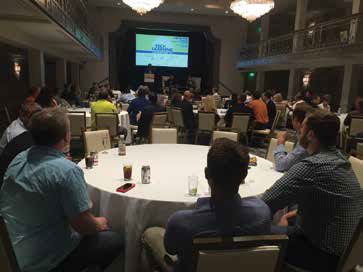
In this session, it quickly became clear that the subject is one of the most pressing for school districts. Donna Williamson, Tech Director at Mountain Brook (AL) Schools, began by discussing their recent strategies. “We implemented a data governance policy and a process for requesting any export for the district. We keep a record of any data that leaves the district via the form. We also added questions on our online registration and enrollment process that provide parents the opportunity to opt in to sharing information with our PTO and participating in the online directory app provided by the PTO. We also post all acceptable online programs and the acceptable data that can be imported. Lastly, we use ClassLink to upload logins and passwords for online applications so that students are not required to remember so many logins and passwords. We use an API when possible.”
R.J. Gravel, Assistant Superintendent for Business Services at Glenbrook (IL) High School District 225, discussed how they handled a security breach situation. “We recently experienced a substantial phishing incident initiated by our students, which resulted in a national news story,” he said. He went on to share details of the incident, then he explained their approach to measure the impact of the actions on the district and discussed the education/policy changes they made to minimize potential incidents in the future.
Pete Just, CTO, Metropolitan School District of Wayne Township (IN), also broke down some of their best practices. “Our story is that over the past two years we’ve moved towards identity management. We’ve centralized our ID creation and rights management, automated it, and handed over that management to the HR team. The result is much faster action on getting users into and out of systems and alignment of system rights with job tasks.”
Mountain Brook governance apps are located at www.mtnbrook.k12.al.us
Forms for data exports are located at mountainbrookschools.formstack.com/forms
To see the process in detail , view the presentation at http://bit.ly/2uFWDTH.
Just shares some extensive schematics on district provisioning at http://tinyurl.com/yabrjjer.
EQUITY AND DIVERSITY
When we discuss equity in education, we usually think about devices and Internet connections, which of course are vital to ensuring all students have equal access to learning opportunities. But how are districts ensuring all voices are heard and seen in their edtech programs? Attendees in the “equity and diversity” workgroup shared their ideas and solutions.
“When it comes to diversity in our district, we promote the involvement of students of all races to become active,” said Talvickeo Banks, Director of Technology for the West Memphis School District. “There have been coding workshops targeting girls of color, and I promote STEM and technology to all students every day. Efforts have also been made to contact the parents with calls, emails, and letters to gain interest.”
“We host school tours to highlight the different aspects of our department, from data entry/central registration to technology integration, to programming, to hardware deployment and network engineering,” Diane Doersch, Chief Technology & Information Officer at Green Bay (WI) Area Public Schools, reported. “We are very intentional about making females in our department visible, as well as members of diverse backgrounds. I am also a member of a state leadership organization called WIT Wisconsin (Women in Technology) and I am chairperson of a team called WIT4Girls that promotes and attracts young women to technology careers.”
Art Fessler, Superintendent at Community (IL) Consolidated School District 59, said they launched a department of SEL and student equity three years ago. “The leadership in the department offers a significant amount of diversity and culture awareness training with all staff and leaders. We have also brought in guest speakers to help students see models that look like them.
“I also believe a community mentoring program is essential to this work. We will be doing more of this next year in partnership with Harper College. The Career Expo at Harper College highlighted women going into STEM fields. We advertised it heavily at schools and through Community Outreach Specialists.”
“We started STEAM clubs at our more diverse campuses in order to bridge the gaps that they experience,” said Mike Kuhrt, Superintendent at Wichita Falls (TX) ISD. “Those clubs presented their projects at a STEAM fair in collaboration with our local university. We also have TAME (Texas Alliance for Minorities in Engineering) clubs on our secondary campuses and one Title I elementary campus. With that being said, we have a long way to go to get close to equity.”
RESOURCES
CoSN Digital Equity Toolkit cosn.org/digital-equity-toolkit
Kajeet PublicMaterials tinyurl.com/KajeetPublicMaterials
Gender Equity in Technology - NCWIT - National Center for Women in Technology www.ncwit.org/resources
TEACHING CRITICAL THINKING AND DIGITAL CITIZENSHIP
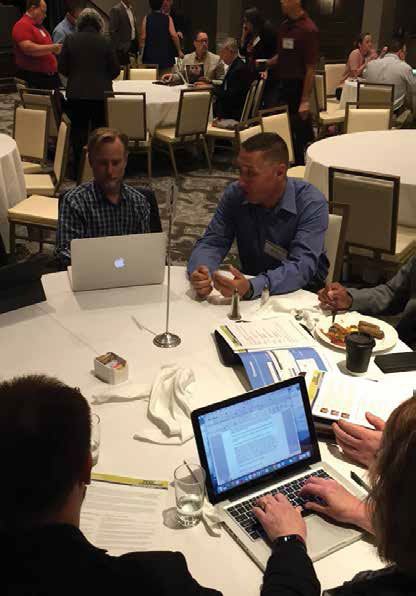
The discussion around the topic of digital citizenship focused mainly on tools, with Common Sense Media being the most widely embraced resource.
“Our work as a Supporter School and a partnership with Common Sense Media help on the curriculum side, but this is our biggest challenge,” said Jennifer Forsberg, Director of Technology, Bronxville (NY). “We have curriculum in place for all 6-8 graders, and it’s sporadic for elementary, but next year with our hiring of an Elementary Technology Specialist, this will be part of her work. Showing Screenagers last year helped, as well. I also invite our Assistant District Attorney in to share updates on the latest and greatest with social media in our area.”
Keith Bockwoldt, Director of Technology Services, Township (IL) High School District 214, said his district uses a scope and sequence of a digital citizenship course in all four years of high school. “We also have a Schoology course for parents, to help them understand digital citizenship and how to work with their children,” he said, “along with training coordinated at an Apple store.”
Chris Stengel, Director of Technology at Mt. Lebanon (PA) School District, said his district partners with Common Sense Media and the district librarians deliver their digital citizenship curriculum, which has been a great success at their elementary buildings. “We also work with our PTAs to have parent education events where we stress the importance of parent-student communication for safety and citizenship issues,” he said.
“We’ve incorporated a Digital Learning Special in elementary schools that teaches research, typing, digital citizenship, and use of digital tools,” said Brad Hagg, Chief Technology Officer at Warsaw (IN) Community Schools. “It’s based on a blend of the AASL Standards for the 21st-Century Learner and the ISTE NETS Standards.”
GoGuardian sponsor Cody Rice discussed their work using artificial intelligence to categorize content. “This allows us to help educators understand and intervene when students need help online. In addition, by providing the ability to directly message students, we have seen an 80 to 90 percent decrease in inappropriate behavior online.”
EFFECTIVE PARTNERSHIPS BETWEEN IT AND CURRICULUM
Now that digital curriculum requires a partnership between IT teams and curriculum and instruction teams, this working group had a vigorous discussion about how communication between the two groups happens in districts.
While one or two participants felt that districts have been having the same conversation for more than 20 years, there was a general acknowledgement that those who want to control change have to be change agents.
Matt Penner, Director of Information Technology and Instructional Technology at Val Verde (CA) USD, said, “leadership is the biggest force in driving things forward. There is a chasm between central office and building leaders.”
“We are struggling to level the tech and instructional coaches. They lack each other’s competency,” said Leslie Black, Director of Media and Student Information Services at Catawba County (NC) Schools. “Curriculum people are being asked to change their focus, to look at instruction as a whole. And we’re depending on the building leader to identify those who need help with tech integration.”
Sandra Paul, Director of Information Technology, Union (NJ) Public Schools, said that she works closely with her curriculum team. “My biggest thing is that instruction should drive technology,” she said. Recently, she angered someone for not ordering SMART Boards because they hadn’t articulated an instructional rationale for the purchase.
Getting curriculum folks to reflect on the integration of technology into coursework involves modeling, communicating, and building systemic change. Beatriz Arnillas, formerly of Houston (TX) ISD, said their IT team worked every day to improve their relationships with the curriculum team, who had a lot of demands. “We discussed what operability could do for them,” she said. “We helped them change their instruction to improve outcomes. We offered them something of value.”
REDESIGNING LEARNING SPACES

“What are the best learning spaces to support students in their journey to be successful for life?” According to Superintendent Art Fessler, that’s the question Community (IL) Consolidated School District 59 set out to answer before redesigning their classrooms. From there they created prototype rooms, each with a variety of “learning zones” and furniture types, and gathered teacher and student feedback before expanding to additional rooms.
Elizabeth Freeman, Director of Innovative Learning for Fremont (IL) School District 79, explained that her district also began with prototypes and a focus on the types of learning the redesign was meant to address. In addition, they held a student contest to redesign the library, which was renamed the Wildcat DEN (Designing, Exploring, Networking).
Linwood (NJ) Public Schools took student involvement one step further. “We created a design and fabrication studio with a grant-funded CNC overarm router,” explained Frank Pileiro, Supervisor of Technology. Students then used opendesk.cc designs to build furniture and redesign their own studio. The results were so attractive, practical, and affordable that the students have been asked to create furniture and displays for other parts of the school.
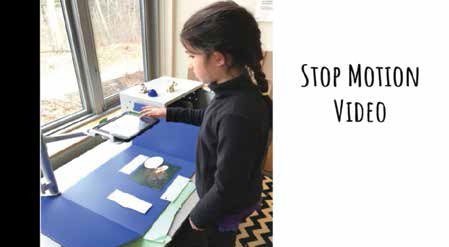
Jean Tower, Director of Media and Digital Learning for Needham (MA) Public Schools, said that the language schools use in describing spaces is an important aspect of the redesign process. “We are transitioning former computer labs into ‘innovation studios’ with stop motion stations, sound booths, and other spaces designed to encourage collaborative work and creation,” she said.
Examples of the sorts of furniture being used to create collaborative and flexible learning environments include:
● Nesting tables that are easy to move and regroup
● Chairs and stools that glide or rock
● Telescoping, “sit to stand” tables
● Green screen walls, lights, tripods, microphones, and other equipment for creating video, animation, and podcasts
● Portable whiteboards—including homemade ones created with whiteboard paint
● Rugs and cushions that help create separate spaces and make for comfy floor seating.
INNOVATIVE APPROACHES TO PROFESSIONAL DEVELOPMENT
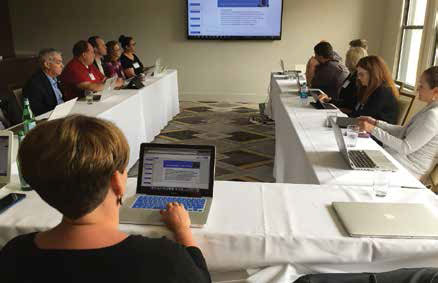
District leaders were excited to share some of their innovative approaches to professional development.
Andrew Schwab, Associate Superintendent, Learning and Innovation, at San Jose (CA) Union School District, started off the discussion. “Professional development should be an adventure where we give teachers lots of opportunities to engage,” he said. “PD is mostly voluntary in our district. We have teacher leaders who get a stipend for taking on additional responsibilities. They give instructional support to teachers, who get credits but not additional salary for participating in PD.” In his district, they operate on an academy concept and also promote Edcamps. “If you’ll come spend three days with us, we’ll give you something cool and teach you how to use it.”
Todd Black, Assistant Superintendent at Mooresville (NC) Graded School District, said, “We take a different slant on PD … We have instructional coaches who are responsible for working with teachers in school. Every school has a PLC and is responsible for finding new tech tools to use in the classroom. Then, the coaches help teachers present the new tools to the class for the first time.” He said that their teachers have not been receptive to PD conducted by outsiders. “Our teachers appreciated other teachers sharing what they know.”
“We use tech coaches to get teachers up to speed,” said Robert Craven, CTO of Tustin (CA) USD. “We now have 13 of them across the district embedded in the classroom. They each work with 10 teachers.” He shared that 97 % of their teachers had been through their summer professional development institute. One interesting thing they did on their own, which he invited others to model, is the following: “The coaches took over an empty room and turned it into a drop-in lounge that was regularly staffed with coaches and ‘office hours.’ They had coffee, tea, and snacks in an informal environment where teachers felt welcome to come and discuss how to improve their teaching.”
Other approaches included:
● Bring your own project
● Flipped learning
● Un-conference on a regular PD day
● A PD team in each school
● Online PD playground
● Micro-credentialing
● Performance-based pay
MEASURING THE ROI OF 1:1
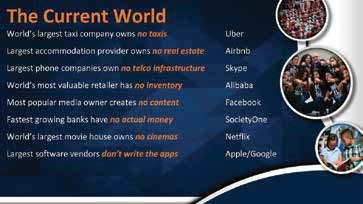
“We need to stop asking whether technology works,” said Joe Kuzo, Director of Technology at Quakertown (PA) Community School District. “That’s like asking if pencils work. Technology is a necessary piece of a child’s academic career; it’s today’s textbook.”
That being said, Kuzo and others in the group discussing the return on investment (ROI) of 1:1 do use data to determine the best ways to use technology. Matt Penner, Director of Information Technology and Instructional Technology at Val Verde (CA) USD, noted that we need to start by defining the ‘R’ in ROI—we need to know what sort of “Returns” we’re looking for. He used this image to show how our world is changing and to illustrate the importance of innovation when preparing students for jobs that have not yet been invented.
Lynn Swanson, Instructional Technology Coordinator at Cary (IL) School District 26, added that “the innovation is in the pedagogy, not the technology.” Her district’s goals include transforming students from consumers to creators of content, and teachers from disseminators to facilitators.
So how does one measure progress towards such goals? “Preparing our students for success goes far beyond test scores,” said Adrian Acosta, Director of Instructional Technology at Houston (TX) ISD.
The group also shared other ways their districts are measuring the ROI of their 1:1 intiatives:
● Student, teacher, and parent surveys to gather data on engagement levels.
● Tracking SIS data on such things as attendance, disciplinary actions, graduation rates, types of classes taken, and student involvement in after-school programs.
● Examining LMS data with regard to which applications are being used, how much time students in various classes are logged in, etc.
● Classroom observations using a rubric to measure progress on specific goals.
● Using a data warehouse to track longitudinal data in order to observe trends and correlations over a period of several years.
● Other anecdotal data aimed at discovering unexpected results.
Tech & Learning Newsletter
Tools and ideas to transform education. Sign up below.
